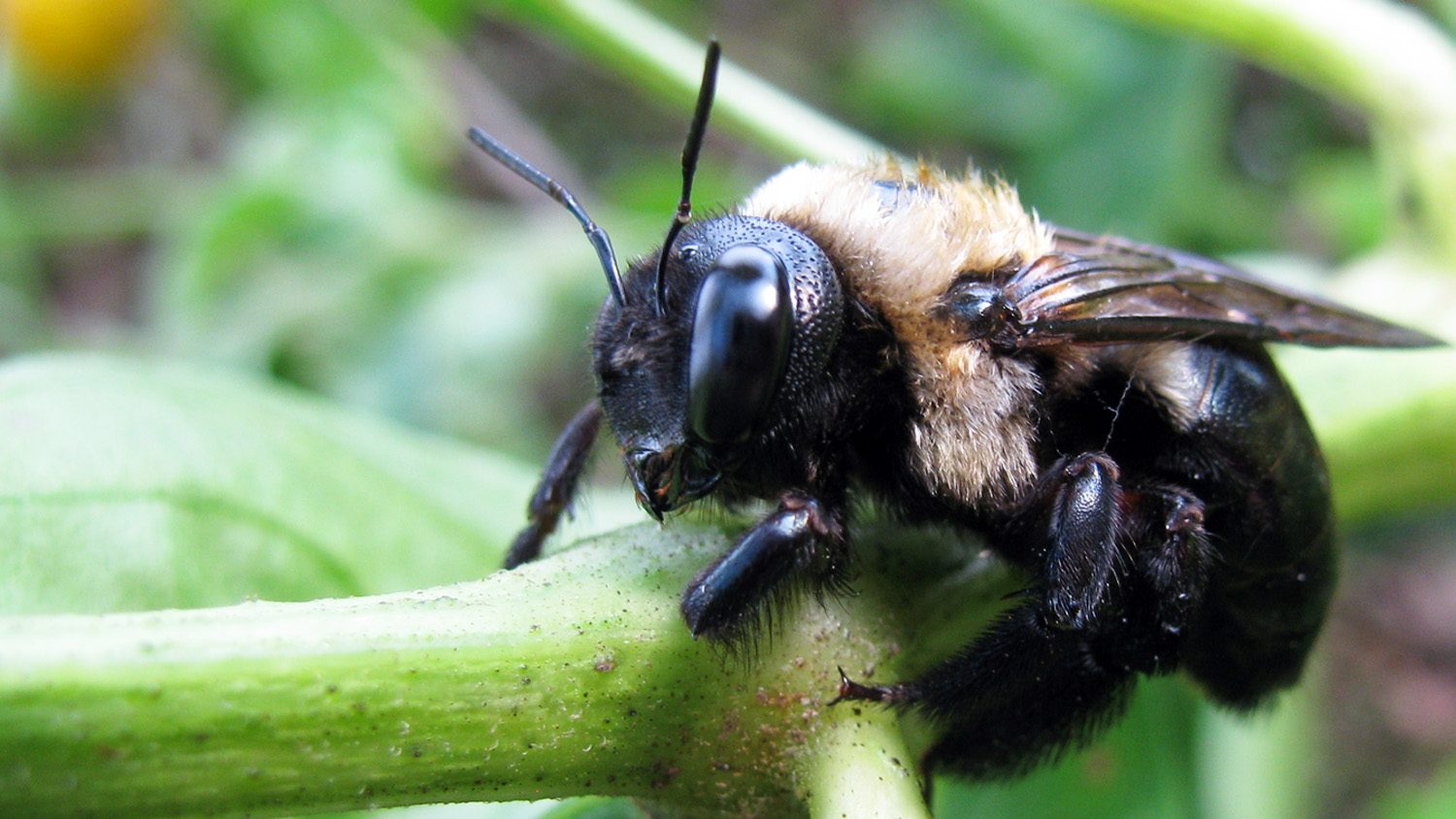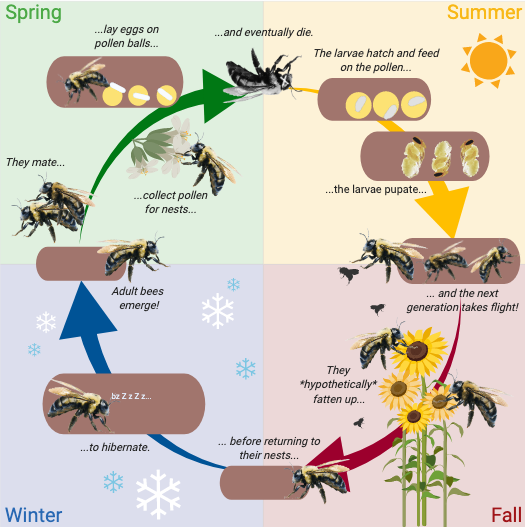
All spring long, big-bodied bees like carpenter bees have been a common sight—buzzing flower to flower and hovering near their nests. Yet now that summer has entered full swing, carpenter bees have seemingly disappeared. Is this cause for concern?
Assistant Professor, Dr. Elsa Youngsteadt says not to worry, “There are probably just as many bees in the summer as there were in the spring, but most of them are flightless and sealed up inside their nests. In the nest, they are feeding off pollen balls their mothers prepared for them.”
While we may associate spring with new beginnings, spring is the last life stage for the adult carpenter bees who overwintered in their nests. These adults spend the spring procreating and preparing nests for the next generation before passing on. This is why you will often find sluggish bees on the ground during the beginning of summer.
“Right now, most of the adult carpenter bees are nearing the end of their life spans and are not very active,” explains Dr. Youngsteadt. “Most only live one year.”

Carpenter bees are one of the many native pollinator species Dr. Youngsteadt studies at the Department of Applied Ecology. They are considered a pest to some homeowners with exterminators charging $75-$400 per job¹. However, little is known about carpenter bee impacts to houses or vice versa. Dr. Yougsteadt’s work intends to collect the data needed to find solutions to these conflicts.
“We have several projects in the works with two main goals,” says Youngsteadt. “One: We will find answers for home-owners who are worried about the bees possibly destroying their houses. Two: We want to know if carpenter bee lifestyles have changed now that some have moved in to our modern dwellings as opposed to living in dead branches—before we came along and started milling lumber for them!”
Dr. Yougsteadt’s team partners with the College of Veterinary Medicine to x-ray carpenter bee nests in order to study them without interfering with the bees’ busy-work. “The [x-ray] records show, ‘Patient: Bees, Carpenter,'” Youngsteadt says.

Whether you consider carpenter bees a pest or pollinating protagonist, you can expect to see the next generation at a flower near you by the end of July.
Learn more about Dr. Youngsteadt’s work and how you, too, can become an ecologist.
If you don’t know the impact carpenter bees do to houses, you aren’t interested. Is a large bee eating your house. Not hard to figure out.
That’s exactly why we are so interested! No one has measured the extent to which bee tunnels weaken structural timbers, or how long it would take for bee damage to compromise the safety of a structure. Without accurate knowledge of the costs, it’s hard to know how much (if anything) to invest in prevention or treatment.
I have many many carpenter bees burrowing in my house and barns. They are an early season pollinator and I welcome them. Burrow away and give me fruit my friends.
Wonderful! Keep a look out for the second wave of big adults who should be hatching soon.
Thank you for this article. My kids and I were remarking about how we hadn’t seen/heard our carpenter bees friends lately, which we enjoy watching from our screened porch (they borrow on the outside trim). They’ve been here for many years. Minimal damage. We tolerate it because we value life and the environment. We were worried that something ate them 🙁 but hopefully they re-emerge soon like the article says! -Monroe, GA
I was wondering where my Carpenter bees had gone. Thank you for reassuring me that it probably wasn’t someone poisoning them. It was just their time to go. Now I get to wait for the babies to come out.
When the Carpenter Bee larvae are in you boards on your house very large woodpeckers come and knock big holes in your walls to get the larvae at least in this area
The Carpenter bee is harmless in and around my home/Hawaii and appear to prefer the outskirts of residential structures, far removed from the area… mostly downed trees/wood set off and away from most structures with bustling activity. They’re cool and I dislike finding them at the end of their life cycle. They only live up to a year at most. A buddy is a pest control expert who claims to never have witnessed a home issue with them so I’m not worried.
Hi!
Carpenter bees are destroying my wood shed. I have tried to naturally get rid of them for 3 years, but nothing has worked. Did you get the results from the bee bench study? How do I learn more? Thank you!
Hi Mahi – sorry to hear about your wood shed troubles! The most current advice can be found on NC State’e Extension site, here: https://content.ces.ncsu.edu/carpenter-bees